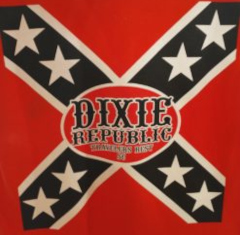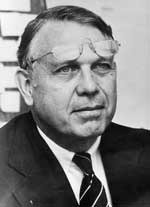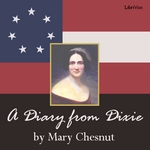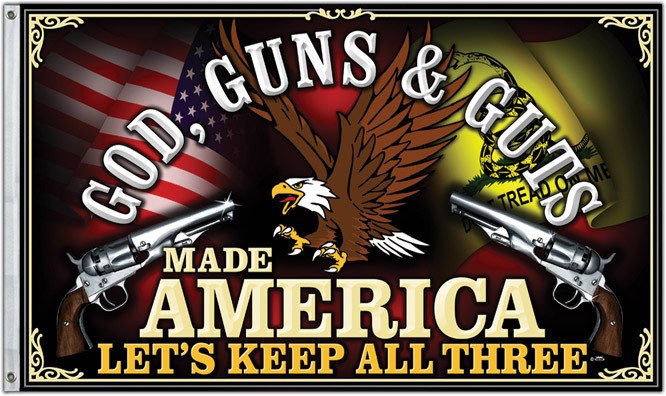Economic Issues And The War For Southern Independence
Free Traders, Not Traitors -- Economic Issues And The War For Southern Independence
By: John Sophocleus
The quickest way to sort the Rebels from the Yanks is with this simple question: Who was the last president of the United States? Any Southerner who is worth his/her salt knows (or intuitively understands) that James Buchanan was the fifteenth and last president to preside over a voluntary coalition of sovereign states under a compact called the Constitution of the United States. Eleven of these sovereign states, believing they were free to leave this coalition, formed a new coalition in 1861 and struggled to carry on the tradition of free association until 1865. Slowly, these states were forced back into what is now an involuntary coalition of states under a revised Constitution. This transition from a voluntary coalition adopted in 1789 to a forced coalition of states was completed with the surrender of Lee at Appomattox. This simple distinction between a voluntary government where one is free to exit, and a despotic government where one is forced to remain seems to escape many -- particularly when applied to one's own government. Even our language provides evidence of a subconscious acceptance of this loss of freedom as author Shelby Foote points out the poor but completely accepted grammar to say the ‘United States is,’ instead of the ‘United States are.’
Few have been taught the legacy of the Southern Patriots of 1861 and the events that led to their firing upon Fort Sumter. It is largely over the difference between free trade and forced exchange. The issues of free trade, open shipping lanes and taxes were often inseparable even back to the days of the Pharaohs. The word ‘freedom’ in ancient times referred to one’s tax status. These same issues were an integral part of major events in recent times including the American Revolution, the War of 1812, the Nullification Crisis, the War Between the States, and even the Great Depression.
Many folks have open disdain for the monopoly power of the car manufacturer, public utilities, etc. However, the more obvious monopoly power of one's own government is not explicitly recognized nor often discussed as possibly coercive. Monopoly power in and of itself is not harmful. It is when monopoly power is abused it is harmful. Many monopolists (including governments) consciously choose not to be abusive and exist longer for doing so.
If history is any guide, the 3000 years of Egyptian rule are ‘filled with moments of humane and decent tax administration,’ according to Professor Charles Adams. Greece flourished under Aristides ‘the Just’ who was the first assessor of taxes for the Athenian League, one of the first voluntary coalitions of nation-states in recorded history. Perhaps the reason this history is rarely taught today is because it would be difficult to avoid the Peloponnesian War and its strong parallels to the War Between the States. This may give students the ‘wrong’ idea that when a central government like the Athenian League becomes coercive it CAN be defeated. Why are students often not taught that the key provision of the Magna Carta was to eliminate taxation without common consent? Or that this gave England the House of Commons? Do children leave their US history classes with the understanding that George Washington was a tax rebel? The Southern patriots are only one episode in this long chain of events. Without economic history the legacy of these patriots cannot be fully understood.
Tariffs have often been used in the US to erect artificial barriers to free trade, designed to limit the competition that domestic producers face. A tariff is simply a form of taxation on imported goods. You may have heard this practice referred to as ‘protectionism.’ Consumers that continue to buy goods after tariffs are imposed have the choice of paying taxes on imported goods, or buying domestic goods at higher prices as non-domestic producers are taxed out of the market. This ‘higher price’ has at times come in the form of lower quality goods, which is often much harder to measure. All things being equal, consumers of ‘protected goods’ are worse off because they face higher taxes, higher prices, and/or lower quality goods than in a free market.
Tariffs were responsible for most revenues collected by the federal government prior to Lincoln's War, income tax, and 16th amendment (making income tax ‘constitutional’). In 1790 tariffs generated 99.9% of total federal government revenue (consistent with what the founders envisioned), in 1860 it was 94%. Today, tariffs account for less than 1%. Domestic producers (of goods competing with imports) also benefit from tariffs. Imagine at one extreme, a tariff so high that imports are completely eliminated so there is no trade with other nations. This result gives monopoly power to domestic producers, but generates no revenue.
Lincoln fell prey to the lobbying of special interests that wanted wealth transferred in their favor. Instead of adhering to the limits of the Constitution he claimed so dear, he used the government as a vehicle to redistribute wealth. This violates the provision of Article I of the original Constitution which facilitates free trade between nation-states.
Former President Clinton's rhetoric associated with placing a 100% tariff on Japanese luxury vehicles is a perfect example of the role that they play in the post-1860 Constitutional US. It is clearly in violation of Article I, Section 8, Clause I that states, ‘all Duties, Imposts and Excises shall be uniform throughout the United States.’ A 100% tariff on Japanese luxury cars is not uniform, nor is it designed to gain revenue. It is a tariff designed to transfer wealth. It is lamentable to look back on history and see how quickly the US abandoned the uniformity clause to embrace different (favourable) tariffs for industries that sought protection from competition.
Five thousand page documents like NAFTA and GATT; the debate over flat income taxes, consumption taxes, value-added taxes, etc., are evidence that most voters today do not understand the genius of the pre-1860 Constitution. It is probably not their fault; public schools certainly do not want this sort of enlightenment taught because it disempowers their employer. Politicians should have a healthy fear of widespread understanding of this genius. If this constraint were put back in place on the federal government, it would reinstate the incentive to foster free trade. This constraint creates a situation where the federal government would directly see a loss of revenue if it allowed increased transfer activity (protectionism) over free trade. In other words, if tariffs (as their main source of revenue) are excessively high, imports will fall to where it lowers total government revenue. The genius is simplicity that disciplines the government from going into the ever-tempting business of providing wealth transfers. Instead of 5,000 pages of wealth transfers included in NAFTA, trade between the U.S. and Mexico could be facilitated in one sentence. The tariffs on all imported goods to the U.S. from Mexico will change from X% to Y%, where Y is less than X. This simplicity and uniformity is more aligned with the 1789 Constitution.
The insistence of Madison and Hamilton on uniformity is telling. A uniform tariff is unlikely to maximize federal revenues, but it is likely to limit economic distortions. A more competitive environment will not foster production of goods that can be produced at a lower cost elsewhere. Federal revenue under the original Constitutional constraint was the tariff rate multiplied by the base. An increase in the tariff rate (to say 61% in the case of the ‘Tariff of Abominations’) will lower the base (the amount of dutiable imported goods purchased) all other things equal. The tariff rate has a threshold - say 10,000% where no federal revenue will result. Obviously, at the other extreme a 0% tariff would raise no federal revenue. As the federal government incurred cost to open shipping lanes and facilitate trade between nation-states, one can imagine an increasing tariff where revenues are increasing if the federal government does its job well. In short the tariff ‘tug of war’ was a matter of degree. Tariffs reach a point, beyond which any additional increase in the rate will reduce the total tax revenue collected. Government placed under this sort of pre-1860 Constitutional structure, would not be willing to impose excessively high tariffs without other methods of revenue available. The document’s genius is revealed when a nation under this constraint becomes completely ‘protectionist.’
Outside of their fame in song and story, the prizes that the CSS Alabama and Florida took were insignificant in comparison to where their real effectiveness occurred: high insurance rates for ships flying the US flag. The issue came to a critical point when Lincoln became so disturbed at the effectiveness of this Confederate response that he threatened to hang every captured privateer as a ‘pirate.’ Jeff Davis, insulted by the analogy, told Lincoln that he would reluctantly hang him man for man, since he had a sufficient store of prisoners from the First Battle of Manassas. To make his point of just how ridiculous hanging a rebel fighting against a despotic government as a pirate would be, Davis let it be known that the great nephew of Paul Revere would be the first in line for the ‘hang-off,’ if Lincoln were foolish enough to start such a barbarous endeavour. Few remember that Lincoln backed down, but many recall, ‘Remember the Maine, the Lusitania, Pearl Harbor,’ etc. The point being that open shipping lanes and the role of our navy are inseparable and significant throughout the evolution of the coalition of states --voluntary or involuntary.
Understanding these issues in the pre-1860 Constitutional document means also recognising the old economic saying, ‘There is no such thing as a free lunch.’ There are costs associated with using a free market. Open shipping lanes to facilitate trade between nations are not costless, and to avoid economic distortions must be included in the price of imported goods. The War of 1812 was not costless, and the young government contracted heavy debt during the war. The purpose of the general increase in the tariff of 1816 was to pay this debt. Many economic facts are worthy of note at this impasse. The tariff of 1816 was raised to 20% and was not resisted by Southerners. I find it interesting that this number still holds true today in the income tax debate --the 44 substantive changes in the federal income tax code in the post World War II era has had little influence on the government's revenues as a percent of the overall economy. It remains amazingly unchanged at about 19.5%. It appears Southerners in the tariff ‘tug of war’ understood this benchmark of roughly 20% on taxing imports, and did not quibble about tariff levels close to this that they viewed as reasonable. Further evidence that Southerners were not unreasonable about the 1816 tariff rate increase is provided by Professor Taussig when he wrote, ‘... distinctly protective provisions were defended by Calhoun, mainly on the ground of the need of making provision for the exigencies of another war; and on that ground they were adopted, and at the same time limited.’ Many of the more protectionist provisions, for instance on textiles, were limited to 1819.
Southerners had a more sound understanding of the purpose of the tariff. The South was not against a tariff, but instead understood that a 20% tariff is more reasonable than a 50% tariff. A uniform 20% tariff earmarked to facilitate open shipping lanes, pay for wars, and promote welfare (back then it meant jobs resulting from market exchange, not handouts) that were the functions of the federal government.
It is worthy of note that the framers of the Constitution were only interested in financing wars of defence not offence, or some other vague connection of threats to US soil like Vietnam or Serbia. The folks who purchased imported goods because free trade existed paid for the cost of these open markets via the tax on the imported goods. Tariffs were more of an issue in downward trends in the business cycle when domestic producers became relatively more interested in wealth transfers as their profits fell. This explanation appears to be the motivating force behind the main protective tariffs of 1824, 1828 and 1842. The most notable of the three, 1828, called the ‘Tariff of Abominations,’ raised the rate to 61%. The response by Southerners, notably South Carolina led by Calhoun, was ‘Nullification.’ The compromise in 1833 lowering tariffs defused the situation, but the stage was set for war long before the passionate rhetoric of northern abolitionists came to cloud the issue.
‘...The necessary result, then, of the unequal fiscal action of the government is to divide the community into two great classes, one consisting of those who, in reality, pay taxes and, of course, bear exclusively the burden of supporting the government; and the other, of those who are then recipients of their proceeds through disbursements, and who are, in fact, supported by the government...’
John C. Calhoun - 1833
Lower tariffs in 1846 and 1857 further eased tensions in the South on the issue, and growth in manufacturing took place from 1833 to 1860 with a declining tariff. Obviously the industries that were disproportionately protected did not do as well as tariffs fell, and may have been the impetus of short term disturbances in the business cycle like the ‘Panic of 1857' as resources were reallocated toward a competitive result. The platform of the newly formed Republican Party lobbied for the most significant increase in the tariff since 1828. It is little wonder why Lincoln was elected without a single Southern electoral vote, given the South's unanimous position on the issue. In 1861, Lincoln made good on his campaign platform, attempting to push a new tariff through Congress. The tariff had fallen back to 1816 rates by the late 1850s at just under 20%. This displeased the industries that benefitted from protectionism. Due to the absence of Southern Congressmen that voluntarily exited the coalition, and the power of the Republican Party that supported Lincoln, the Morrill Tariff Act of 1861 passed, more than doubling rates to 47%.
The response to the tariff increase by South Carolinians (the ‘point man’ and consistent champion of free trade) on April 12, 1861 was to fire upon Fort Sumter where the U.S. customs officials were stationed. The South Carolinians purposely used this site as a symbolic gesture similar to the Boston Tea Party that would stand above the rhetoric, but it seems to have failed. If the average public school student were asked the reason(s) South Carolinians fired on Sumter, it is doubtful that the Morill Tariff Act of 1861 or customs officials that collect tariffs will be included in their answer.
It is at this point in time that Lincoln found himself in a bad situation, a costly war to finance and no Southerners from which to collect a tariff. According to Professor Hughes, the tariff did ‘gratuitously transfer income from the South and other nonindustrial areas to manufacturers.’ In other words, high tariffs without the South are a bad long-run strategy, as stealing from oneself is bound to catch up. Here Lincoln circumvents the Constitution by issuing the income tax along with a mass of other financial legislation.
While the first part of the title of this article acknowledges Southerners as having a tradition of advocating free trade, the second part mentions the Constitutional issue of being a traitor. Many times Lincoln violated the Constitution: the income tax, suspending writs of habeas corpus, the conscription acts, etc. Too few Southerners today understand the specific charge that Southerners in 1861 were referring to when calling Lincoln a traitor. Let me direct you to Article 3, Section 3 of the original Constitution that states:
‘Treason against the United States shall consist only in levying war against them, or in adhering to their enemies, giving them aid and comfort. No person shall be convicted of treason unless on the testimony of two witnesses to the same overt act, or in confession in open court.’
Southerners understood language at its face value, unlike the politically correct English taught in schools today. Note that the war must be levied against ‘them,’ or in adhering to ‘their’ enemies. The plural clearly refers to the sovereign states. More simply, the federal government could commit treason against a state (or group of states) but not the inverse. Also, a state could commit an act of war against another state, for example when Northern troops descend on the sovereign state of Virginia. When Lincoln makes his call for a 75,000 man federal army, many Southerners saw this as the first overt act of aggression and treason against the sovereign states. This is probably why Jeff Davis was held for two years after the war but never tried for treason. Keeping in mind Article 3, Section 3, it is hard to make a case that South Carolina committed an act of treason. Unlike the armies of the Northern states that militarily invaded Dixie, the batteries in South Carolina that fired on Fort Sumter were not committing an act of war on another sovereign state but instead the federal government. This invasion of armies from the North reaches ‘critical mass’ on April 19, 1861 in Baltimore where citizens rebel against Massachusetts troops marching through their city on Pratt Street. The event is what led to the state song ‘Maryland, My Maryland.’ It became a Confederate anthem.
Southerners have a tradition of being anti-Union, but not anti-federalist. Prior to the war, a Southerner claiming to be a ‘Unionist’ was making a statement of allegiance to the pre-1860 Constitution and its strong support for free trade, and competition at many levels. The importance of Southerners understanding the benefits of free trade are every bit as relevant ‘six score and four years’ after the firing upon Fort Sumter. When one claims to be an advocate of states rights, it is a statement that the fifty state governments of this coalition can make decisions more in keeping with its citizens than one government. Most folks know when they go to buy a car, if they have fifty dealers to chose from, all other things equal they will get a better deal than if there is only one. The same principle of competition holds true with the sovereign states. If one state becomes too abusive, then residents can ‘vote with their feet’ by moving to another state more to their liking. If one state does a better job at governing its people and creates economic opportunity, other states will have to respond or lose the population base.
The legacy of the Southern Patriot includes the spirit of David against the Philistines, the Greeks at the Battle of Marathon, the Spartans in the Peloponnesian War, the rebel barons at Runnymede, the Revolutionaries at Lexington and Concord, and of course the ‘rebels’ at Fort Sumter. May the Southern League always honor this spirit in its quest for independence and freedom from despotic government.
Mr John Sophocleus, an economics professor, was the Libertarian candidate for governor of Alabama in 2002.
Originally Published at the now defunct website Southern Events (southernevents.org)
- Log in to post comments











